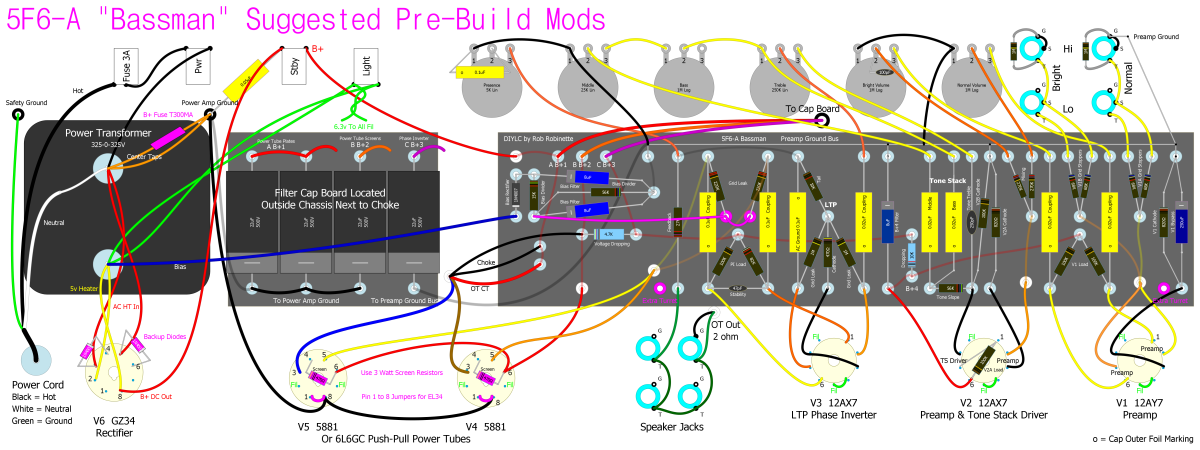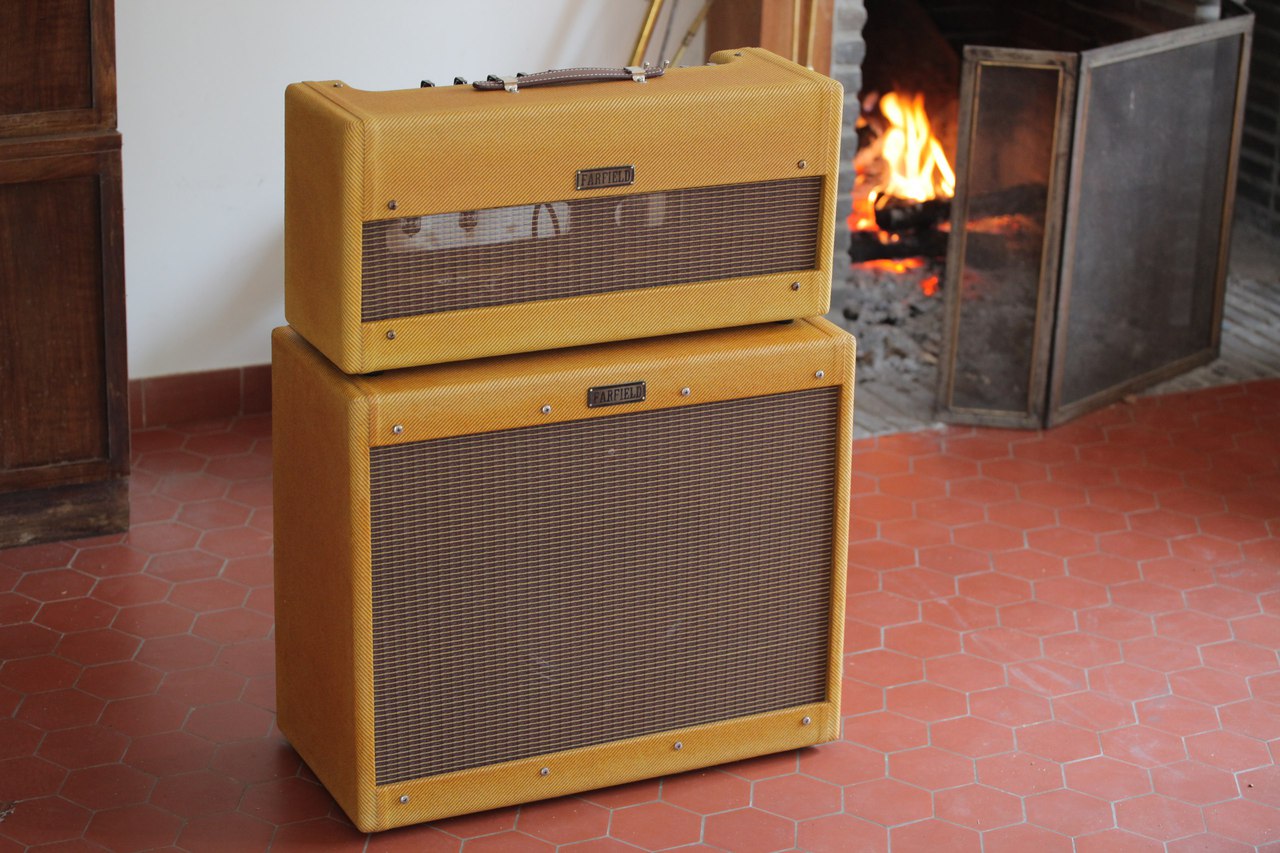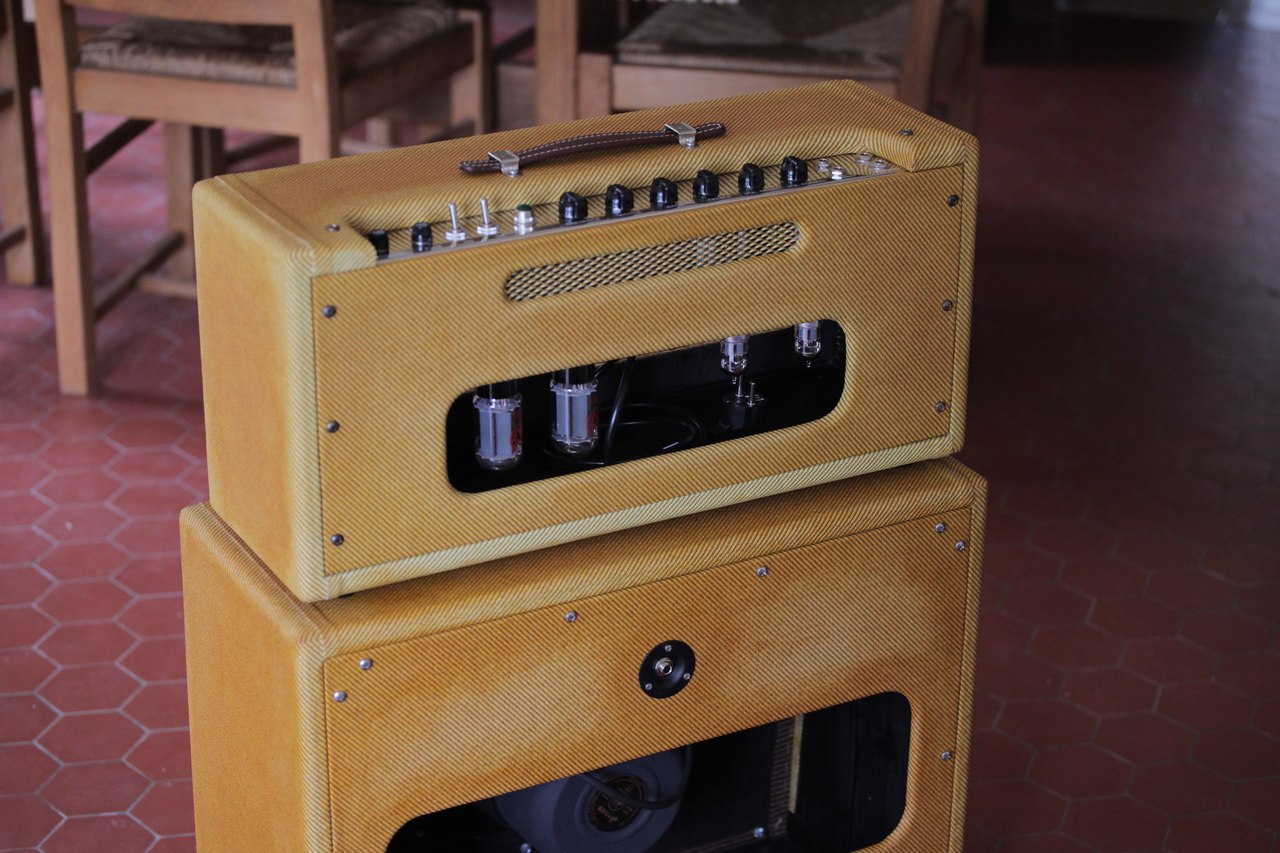I posted a topic not so long ago, about making a 5F6a Bassman with 6V6 instead of 5881.
As a first step, I just made the original 5881 version - I will adapt it to 6V6 when it works properly with the original configuration.
I used Rob Robinette's layout, with half power switch and negative feedback resistor mods. I also grounded the power tubes thru a 1ohm resistor for easy plate dissipation measurements.
Unfortunately, it doesn't work as it should.
It does produce sound, but it also has very loud artifacts: high frequency screeching, ugly distortion at low levels. At some positions of the pot, the amp makes really loud distorted buzz sounds. So it's highly unstable.
The hum level is also higher than it should be, and the guitar sound thin in general.
I double checked all the connections - they seem to be correct (I will check again, because most of the time it is wrong connection, even if I quadruple check it).
Does these hints ring any bells to you? Where should I look?
What bugs me, is the strange color coding of the Hammond 1760L transformer. It uses black as 4 ohm, green as ground, yellow as 8 ohm, white as 16 ohm. I use 8 ohm output.
As a first step, I just made the original 5881 version - I will adapt it to 6V6 when it works properly with the original configuration.
I used Rob Robinette's layout, with half power switch and negative feedback resistor mods. I also grounded the power tubes thru a 1ohm resistor for easy plate dissipation measurements.
Unfortunately, it doesn't work as it should.
It does produce sound, but it also has very loud artifacts: high frequency screeching, ugly distortion at low levels. At some positions of the pot, the amp makes really loud distorted buzz sounds. So it's highly unstable.
The hum level is also higher than it should be, and the guitar sound thin in general.
I double checked all the connections - they seem to be correct (I will check again, because most of the time it is wrong connection, even if I quadruple check it).
Does these hints ring any bells to you? Where should I look?
What bugs me, is the strange color coding of the Hammond 1760L transformer. It uses black as 4 ohm, green as ground, yellow as 8 ohm, white as 16 ohm. I use 8 ohm output.




































